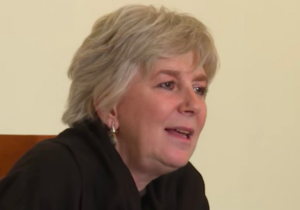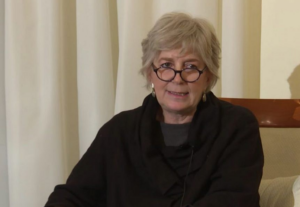Elena Ferrante is a pen name for a novelist, and rumors about her death have made her fans very worried.
Elena Ferrante is known for her mind-blowing work in the Neapolitan Novel, a four-book series that includes My Brilliant Friend, The Story of a New Name, Those Who Leave and Those Who Stay, and The Story of the Lost Child.
But in one interview, the author said that she thought of the four books as “one single novel” that was just published in parts. It went on sale with 10 million copies, which were sold in 40 countries.
Ann Goldstein, an editor and translator from the United States, took her work, “My Brilliant Friend,” and put it into English. The book used to be called L’amica geniale.

Who Is Elena Ferrante?
Elena Ferrante is a famous Italian author who writes under a pen name. She likes to keep her life a secret. No matter who she is, she has sold millions of copies all over the world.
One of the best novelists writes under the name “Elena Ferrante” for the book she has written. Even though she is well-known, the author has been a secret since 1992, when her first book came out.
Still, she has done a lot of interviews about the plot and analysis of her book. Her fans, who are interested in her personal life, have come up with different theories about the author based on what they think they know about her.
Over the years, many of her fans and people who were interested have tried to prove that she was who they thought she was. In 2013, James Wood wrote a summary of the article as he was going through the letters in the volume to learn more about her.
Wood said, “She grew up in Naples and lived outside of Italy for a while.” She has a degree in classics, and she has talked about being a mother.
Who does writer Elena Ferrante live with? Meet Her Husband
People think that author Elena Ferrante is married and has kids. But since the author has a secret identity and a private life, information about her personal life is still hard to come by.
People have found a link between her personal life and that of Anita Raja and her husband, the author and journalist Domenico Starnone, even though they have different ideas.
Also, because of her books, many of her fans who are interested have said that she has two daughters who are no longer with their father.
No matter what, her fans are still trying to find out who she is, but the author has perfectly hidden herself. Her fans hope that they will be able to meet the author someday.
Find Out About Novelist Elena Ferrante and Her Family on Wikipedia
On her Wikipedia page, Elena Ferrante is called an Italian novelist who writes under a pen name. She has worked in the field since 1992, which is about 30 years.
Since the author has kept her identity secret up to this day, her family information has also been kept secret. Still, her fans have come up with different ideas based on the number of pages in her books.
Marco Santagata, an Italian novelist and philologist, came to the end of his theory about the author by saying that the author used to live in Pisa but left by 1966. He thought that the likely novelist is a professor from Naples named Marcella Marmo.
The fake news that Elena Ferrante had died was a hoax
Fake news about Elena Ferrante’s death is spreading on the internet as Italian publisher Sandro Ferri confirms that she has died. But it’s just a lie made up by a fake account.
Alex Shephard, a writer for the New Republic, put an end to the death hoax by saying on Twitter, “FYI, this is our Italian friend Tomasso Debenedetti. Elena Ferrante is fine and is probably doing something like hanging out on the Amalfi coast.”
He also wrote on Twitter, “Just to be perfectly clear: Elena Ferrante is not dead. The story that she is dead is not true.”

Writing
Elena Ferrante is the name of the author of many books, including the Neapolitan Novels, which is a four-volume set. The Neapolitan Novels tell the story of the lives of two smart and perceptive girls who were born in Naples in 1944 and try to make their own lives in a violent and stifling society. The books in the series are My Brilliant Friend (2012), The Story of a New Name (2013), Those Who Leave and Those Who Stay (2014), and The Story of the Lost Child (2015), which was nominated for the Strega Prize, which is the most prestigious Italian literary award.
Ferrante says, “Once a book is written, it doesn’t need the person who wrote it.” She has said many times that she can’t work without being anonymous and that keeping her real name out of the spotlight is important to how she writes. Based on what Ferrante says,
Once I realized that the finished book would go out into the world without me, and that nothing of the real, physical me would ever appear next to the volume—as if the book were a little dog and I were its owner—it made me see something new about writing. I felt like I had finally let go of the words.
The first piece of her work to be published in English was “Delia’s Elevator,” which was translated by Adria Frizzi and included in the book After the War (2004). It tells what the main character does on the day her mother is buried, especially when she goes back to her safe place in the old elevator of the apartment building where she grew up.
The Story of the Lost Child, the fourth book in Ferrante’s Neapolitan quartet, was named one of The New York Times’ 10 Best Books of 2015. The Lying Life of Adults, her first book after she finished the quartet, was translated into English by Ann Goldstein. It was a twist on the typical story of a teenage girl coming of age.
Anonymity
Even though Ferrante is known around the world as a novelist, she has kept her identity a secret ever since her first book came out in 1992.
There has been a lot of talk about who she really is, and several theories have been put forward based on things Ferrante has said in interviews and on what her books are about.
Ferrante’s book La Frantumaglia, which is a collection of letters, essays, reflections, and interviews, came out in 2003. In 2016, it was translated into English, and it shows some of her background. In an article for The New Yorker in 2013, critic James Wood summed up what most people know about Ferrante, based in part on the letters in that volume:
Several of her letters have been put into books. From them, we know that she was born in Naples and has lived outside of Italy for a while. She has a degree in classics, and she has talked about being a mother. One could also guess from her books and interviews that she is not married at the moment… “I also study, I translate, and I teach,” she said.
Marco Santagata, an Italian novelist, philologist, Petrarch and Dante scholar, and professor at the University of Pisa, wrote a paper in March 2016 about his theory of who Ferrante is. Santagata’s paper was based on a philological analysis of Ferrante’s writing, a close reading of the novel’s details about Pisa’s cityscape, and the fact that the author shows a deep understanding of modern Italian politics. Based on this information, he decided that the author had lived in Pisa but had left by 1966. He then found that the most likely author was a professor from Naples named Marcella Marmo, who went to school in Pisa from 1964 to 1966. Both Marmo and the publisher say that Santagata is not who he says he is.
Claudio Gatti, an investigative reporter, wrote an article in October 2016 that was published in both Il Sole 24 Ore and Frankfurter Allgemeine Zeitung. The article used financial records about real estate deals and royalties payments to show that Anita Raja, a translator who lives in Rome, is the real author behind the Ferrante pen name. Many people in the literary world said that Gatti’s article was an invasion of privacy, but Gatti says that it wasn’t “By saying she would sometimes lie, Ferrante gave up her right to hide behind her books and let them live and grow while their author stayed unknown. In fact, she and her publisher seemed to have made people want to know who she really was.” The British author Matt Haig wrote on Twitter, “Think that trying to find the “real” Elena Ferrante is both a shame and a waste of time. The books an author writes show who they really are.” In an article for The Guardian, writer Jeanette Winterson called Gatti’s investigations mean-spirited and sexist. She wrote, “At the heart of this so-called investigation into Ferrante’s identity is an obsessional outrage at the success of a female writer who chose to write, publish, and promote her books on her own terms.” She went on to say that wanting to find out who Ferrante was was sexist in and of itself, and that “Italy is still a Catholic country with strong patriarchal attitudes toward women.” Others who commented on Gatti’s article said that it is important to know about Ferrante’s life.
In December 2016, the controversial Italian prankster Tommaso Debenedetti posted on the website of the Spanish newspaper El Mundo what was supposed to be an interview with Raja in which she said she was Elena Ferrante. Ferrante’s publisher quickly denied this, calling the interview a fake.
In September 2017, a group of scholars, computer scientists, philologists, and linguists at the University of Padua looked at 150 novels written in Italian by 40 different authors, including seven books by Elena Ferrante but none by Raja. Using several methods to figure out who wrote the books, they came to the conclusion that Anita Raja’s husband, the writer and journalist Domenico Starnone, is probably the one who wrote the Ferrante books. Raja works as a copy editor for E/O Publishing and has been editing Starnone’s books for a long time.
Ferrante has denied many times that she is actually a man. In 2015, she told Vanity Fair that questions about her gender come from the idea that women writers are “weak.”